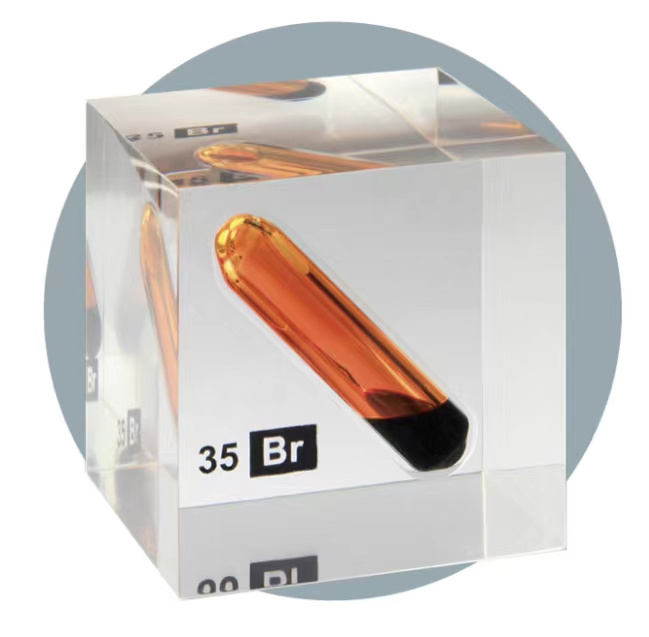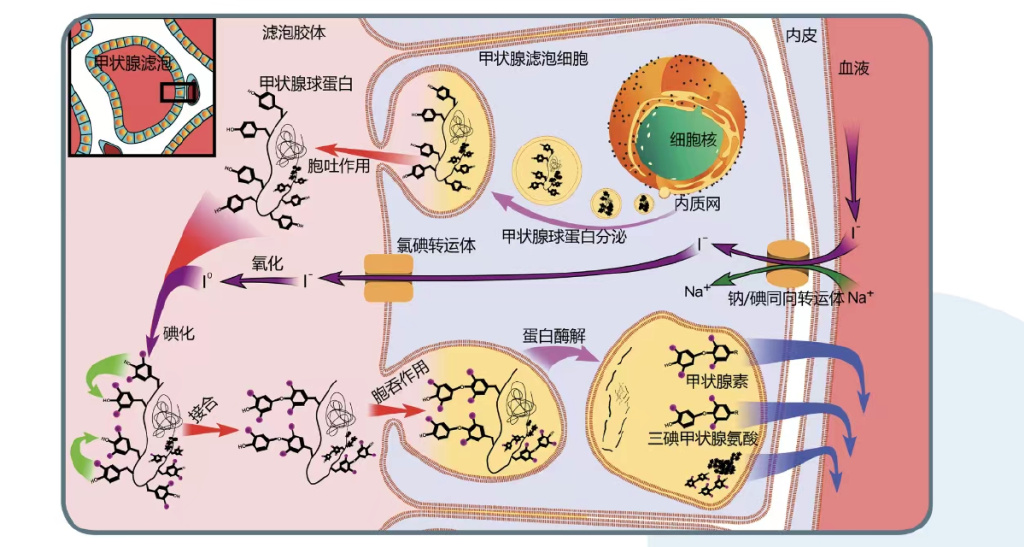The four big Super STAR, who is the big brother!
Author:knowledge is power Time:2022.07.20
From junior high school chemistry textbooks, we learned that the salt in daily life usually refers to salt (the main component is NaCl). As an important condiment, if you do n’t eat salt when cooking, the dishes will be tasteless. In addition, sodium chloride is also necessary for human physiological activity. These knowledge content gives us a preliminary understanding of halide elements such as chlorine. What are the halogen elements? What are the uses for them? Today, let us understand the knowledge of chlorine, bromine, and iodine in the halogen elements. (The November 2019 issue has interpreted the story of fluoride with you)
Chlorine: three meals a day cannot be separated
Scientists invented hydrochloric acid before discovering chlorine gas. Add salt to concentrated sulfuric acid. After the gas produced by water is absorbed, a acidic liquid -hydrochloric acid will form.

British chemist David (picture source / Wikipedia)

The chlorine gas is yellow -green, irritating smell
For the first time, single -quality chlorine was made of hydrochloric acid with soft manganese powder. In the 1970s, Swedish chemist Schiller mixed soft manganese ore (the main ingredient is MNO₂) with concentrated hydrochloride, producing a yellow -green, irritating smell. Affected by the popular doctrine at the time, Schiller failed to confirm this gas. It was not until 1810 that British chemist David was based on a lot of facts that it was confirmed that this gas was a single quality of a new element -chlorine gas. From the discovery of chlorine to chlorine to chlorine, it is recognized as a new element. The process is more than thirty years, and it has experienced unremitting exploration of several scientists. The application of chlorine is widely used, especially in terms of disinfection to humans. For example, after various natural disasters (floods, earthquakes, etc.), chlorine -containing disinfection agents will come in handy. Factory and other ingredients are also inseparable from chlorine -containing disinfection agents.
Bromide: beauty who sleeps for thousands of years

Bromine liquid and gas are reddish brown
In 1824, French chemist Ballet burned the black -angle dishes collected from the Atlantic and the Mediterranean coast to ash, and then obtained a black and gray immersion solution with soaking methods. He adds chlorine water and starch to the immersion solution. The solution is divided into two layers: the lower layer is blue, which is generated by the iodine reaction in the starch and the solution; the upper layer is brownish yellow, which is the phenomenon that has not been seen before. Ballet tries to separate the new compound. He uses ether to extract brown -yellow substances and add harsh potassium (generally refers to potassium hydroxide), then brownish yellow fades; heated the solution to dry to dry, and the remaining substances Like potassium chloride; the remaining substances are hot with sulfuric acid and manganese dioxide, which produces reddish brown gases with faint odor, and it becomes dark red brown liquid after condensation. On August 14, 1826, after the French Academy of Sciences approved the Ballet's report, he fully affirmed his experimental results and suggested that the new elements were renamed as bromine.

After the announcement of the news of the discovery of bromine by German chemist Libi (picture source/Wikipedia) Ballet, two chemists in Germany had regretted it because they both missed the opportunity to discover new elements. One of them is the famous German organic chemist Libi. Li Bixi accepted a request for a salt factory to investigate what components were contained in the mother liquid. During the analysis process, he found that the starch iodide was added to the mother solution, and the parent liquid became yellow after overnight; then the mother liquid was used to distille the chlorine gas to obtain a yellow liquid. He did not add more analysis and studied the liquid to be chloride, and a tag was posted on the bottle of the liquid. As everyone knows, this yellow substance is not chloride but bromine. Bromine and its compounds are widely used in human production and life. A large amount of bromine is used to make photosensitive materials and dyes, chemical reagents, and medical drugs. The essential drugs in the household medicinal box are red mercury. Bromo can enter the human body through the respiratory tract and skin, mainly excrete the body through the respiratory tract. Its toxic effect is similar to chlorine, which has a strong stimulation effect on the respiratory tract and lungs, and has stimulation and corrosion effect on the skin.
Iodine: intellectual element

The iodine is promoted by many important findings in the history of science. The discovery of iodine is full of accidents. Iodine was discovered in 1811 by French chemist Belner Kurtova. At that time, Kurtuwa felt that the copper container with seagrass ash solutions would soon be corroded. He believed that the unknown material contained in the seagrass solution was in the role of copper. He dumped sulfuric acid into the seagrass solution and found a gorgeous purple gas. This gas does not form a liquid after condensation, but it becomes a crystalline with metallic luster. Kulta sent the crystals he had obtained to ask the then French chemist Cleen, De Samme, Ga Luzak and others for research and appraisal, and later named iodine by Game Lubak.

Iodophor disinfection is mild, without stimulating in the 1930s, people invented iodine with alcohol to invented iodine, and quickly obtained the recognition of the American Pharmacopoeia. In the subsequent American Northern and South War, iodine saved a lot of life. Since then, iodine has been widely used in the world. Although iodine has a good disinfection effect, the defects are relatively obvious. Its corrosion and irritation are too large and cannot be used for disinfection of mucous membranes and wounds. Later, in order to solve the disinfection defect of iodine, people were in the 1950s. The iodophor, which is a complex of iodine and surfactants, is also called iodine or complex iodine. It has no irritation to the skin, stable and mild performance. Iodophor has been widely used in the 1990s.

- END -
"Hawking in the Brain Science", 60 years of masterpiece, revealing the instinct of consciousness

Is consciousness really instinct?01In the classic Language Instinct, Stephen Pinke...
Qingshen County, Meishan City, Sichuan discovered the national secondary key protection of wildlife leopard cats
Cover Journalist Gou ChunOn June 23, the cover reporter learned from the Lincao Bureau of Meishan City that recently, when scientific researchers sorted out the image materials taken by infrared camer